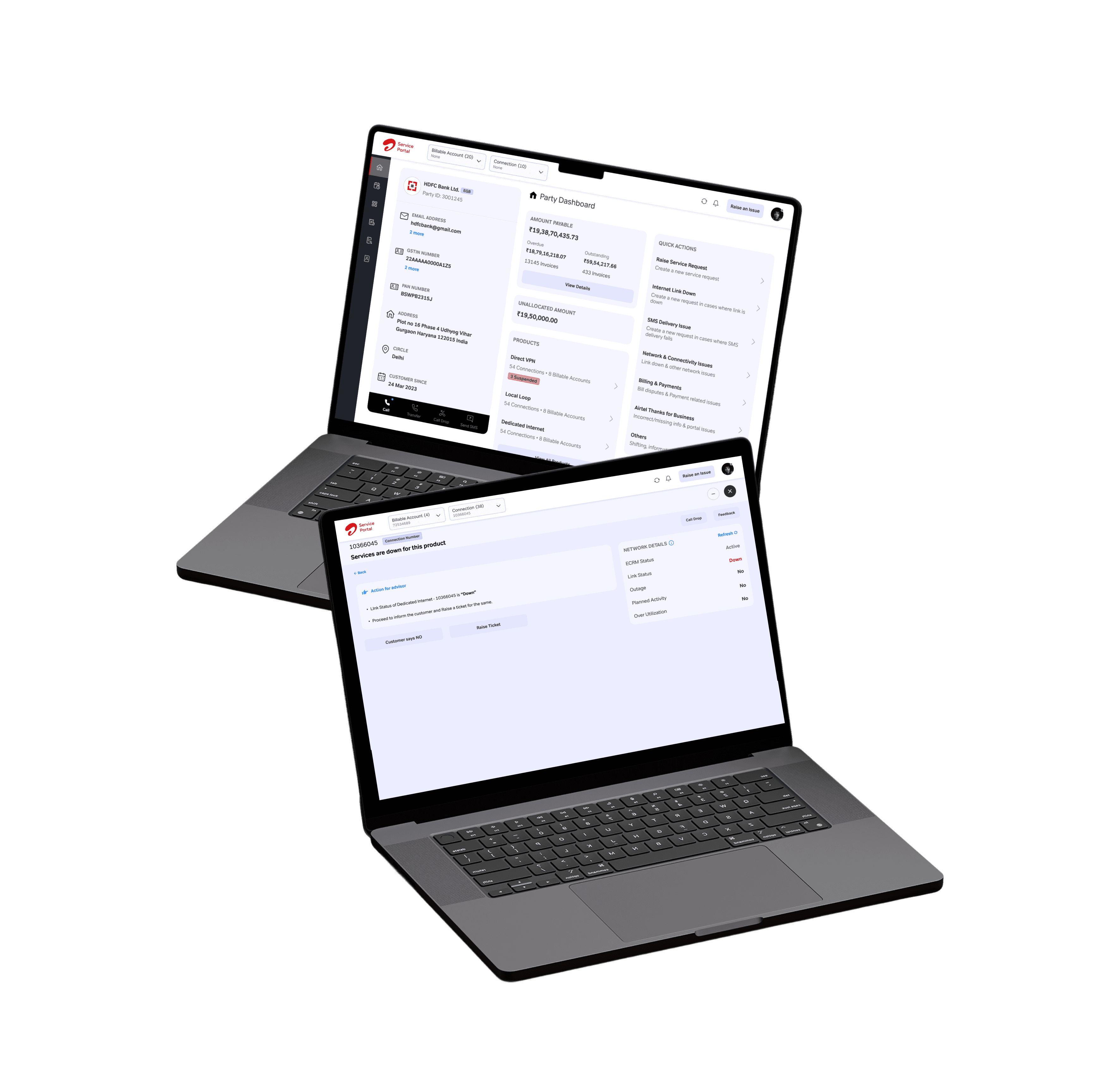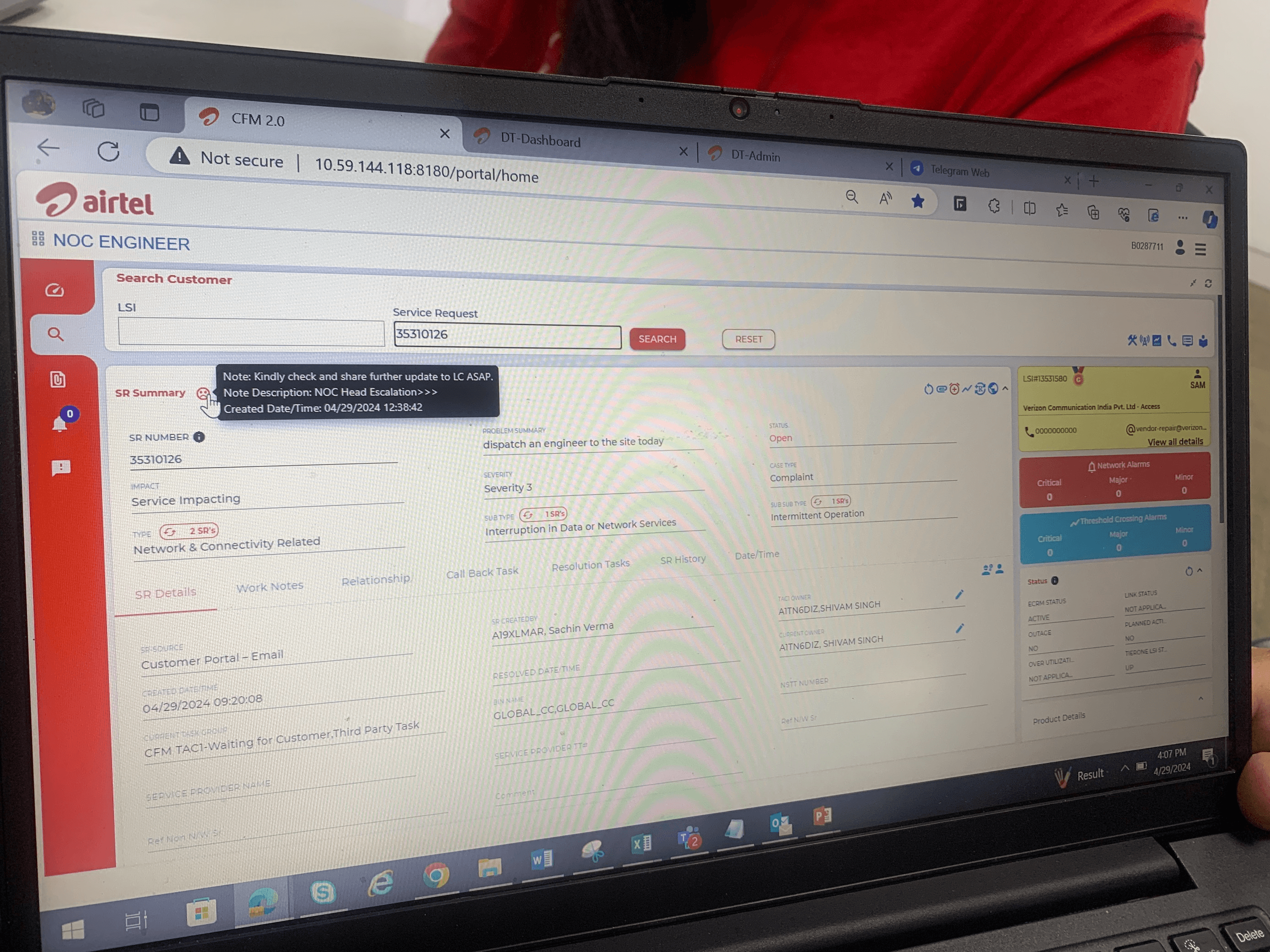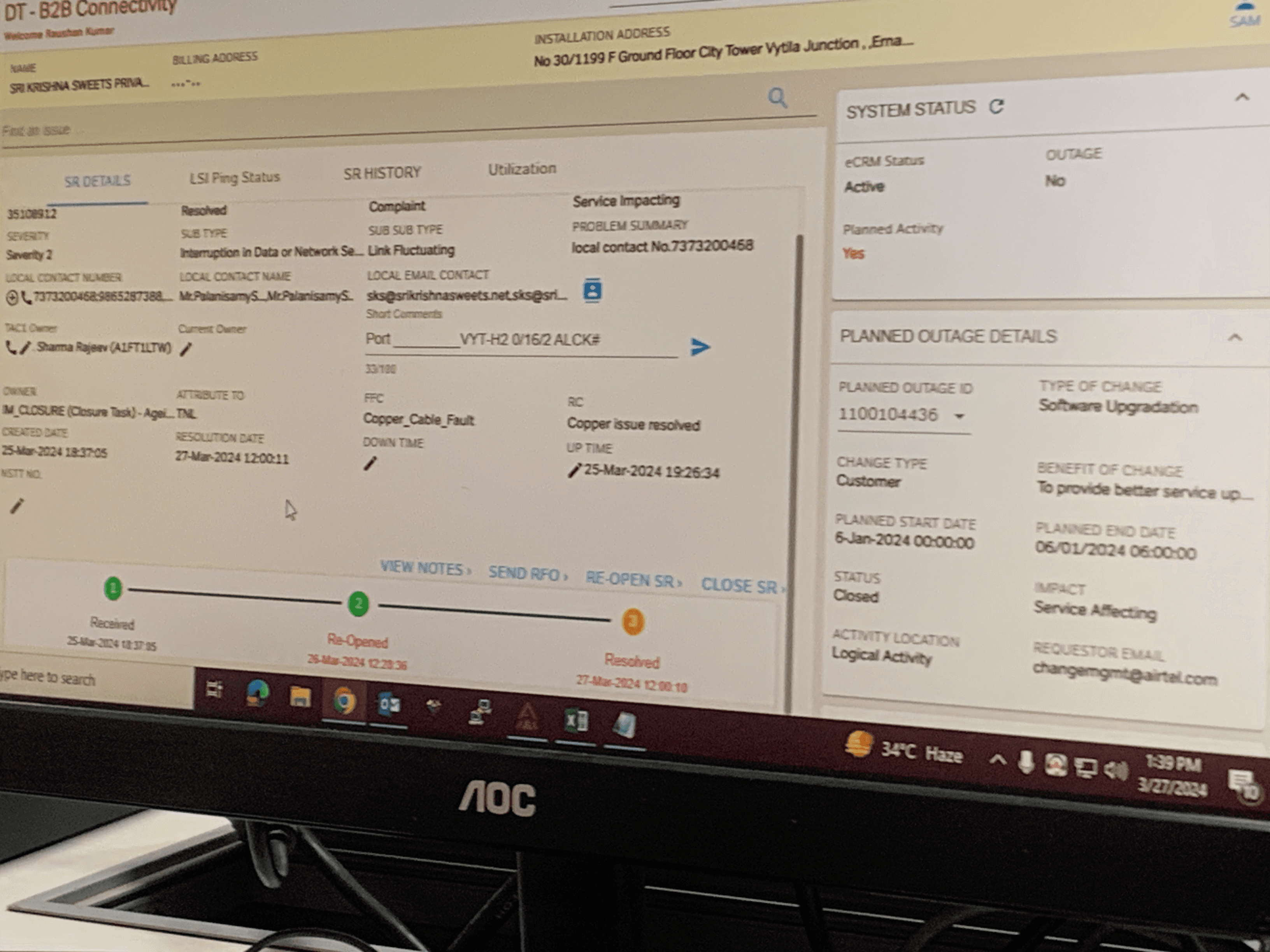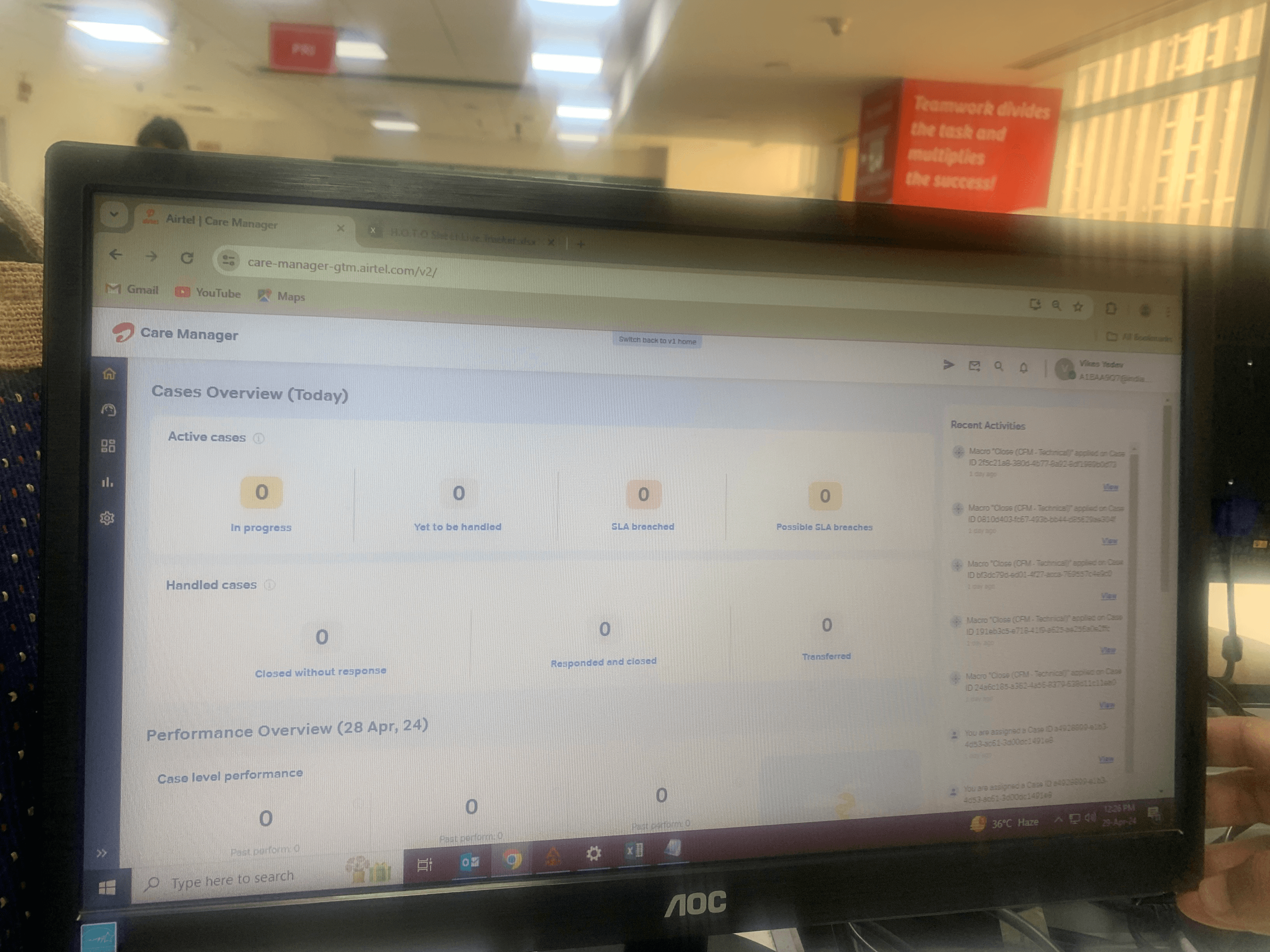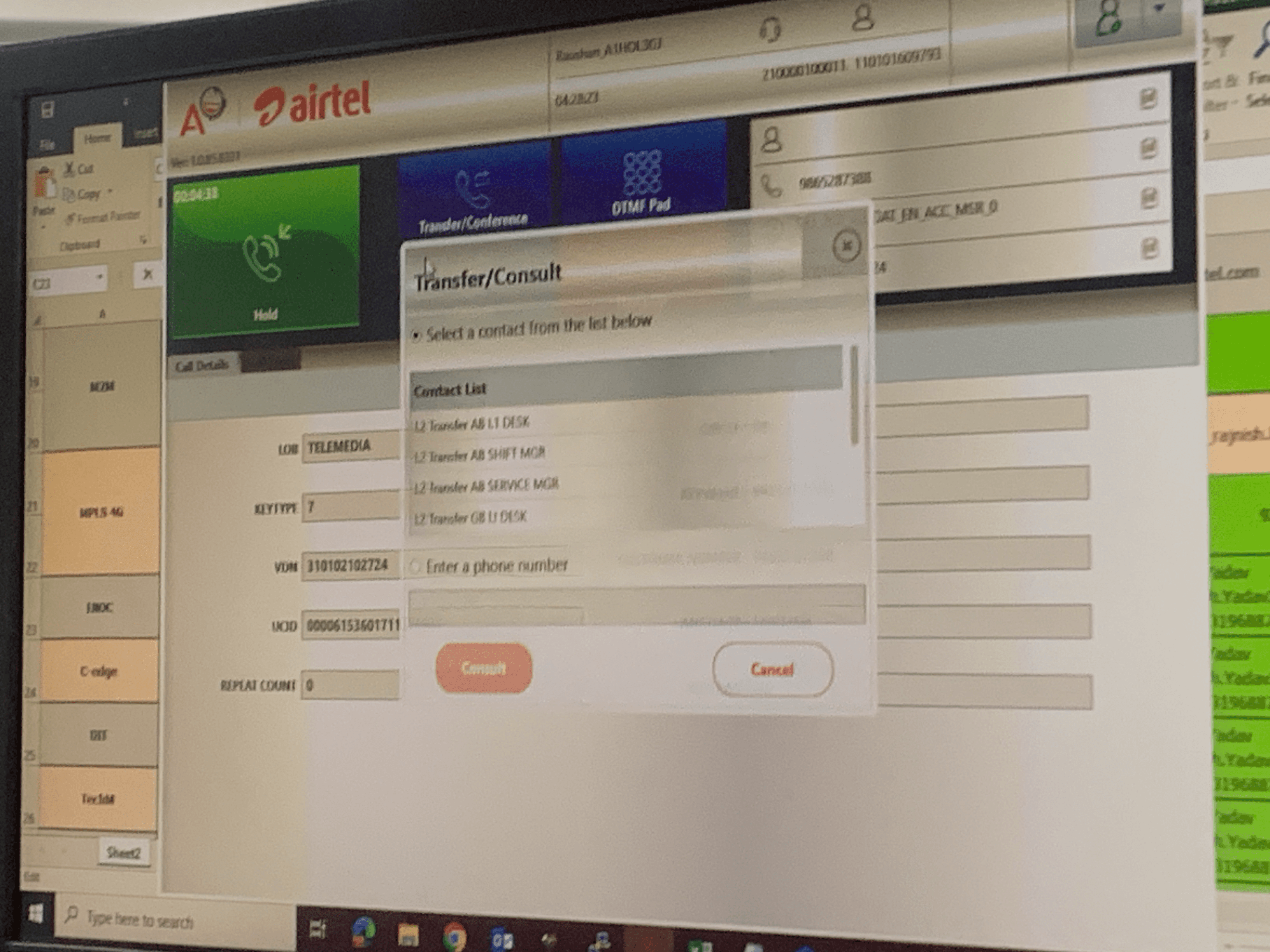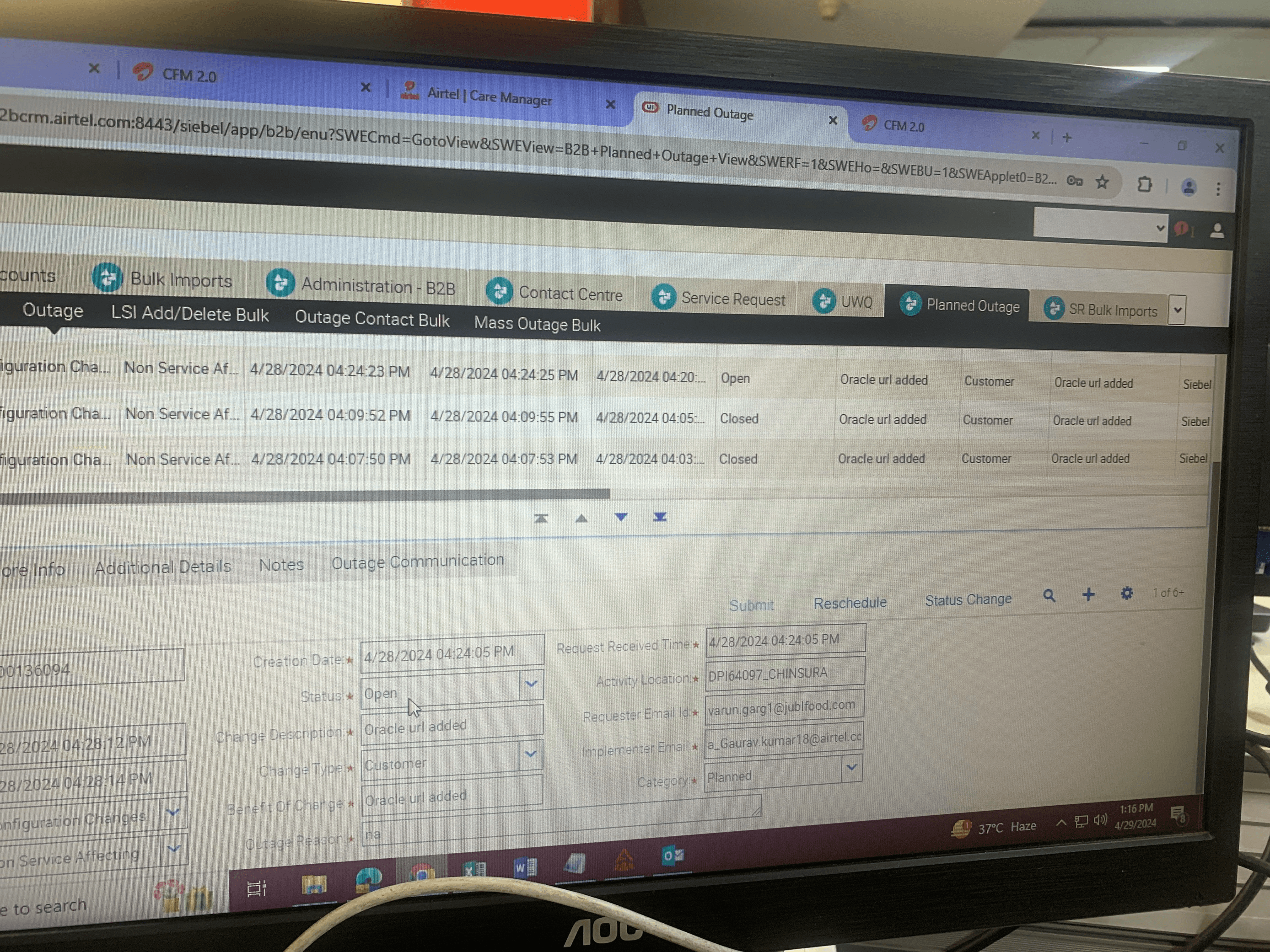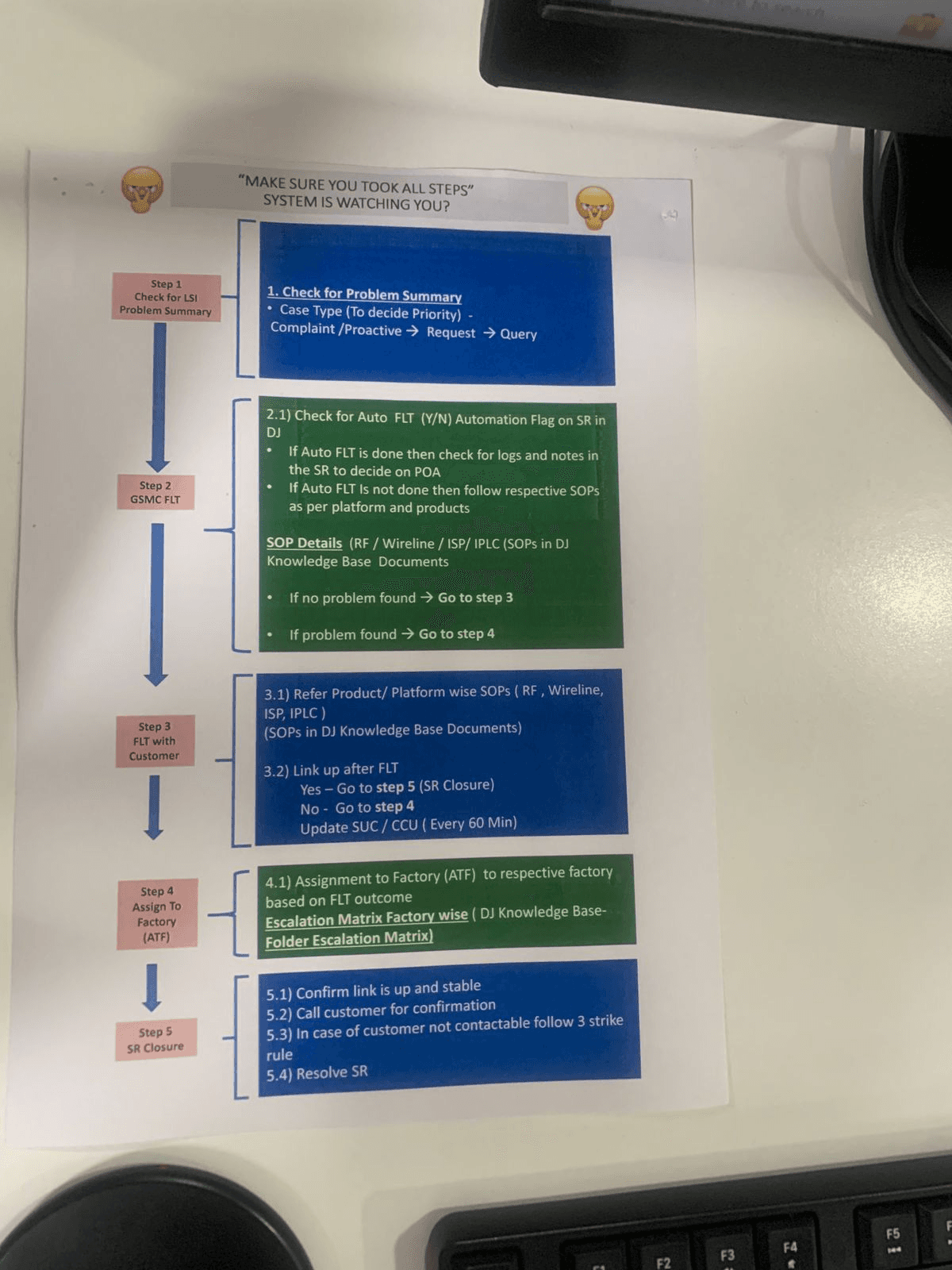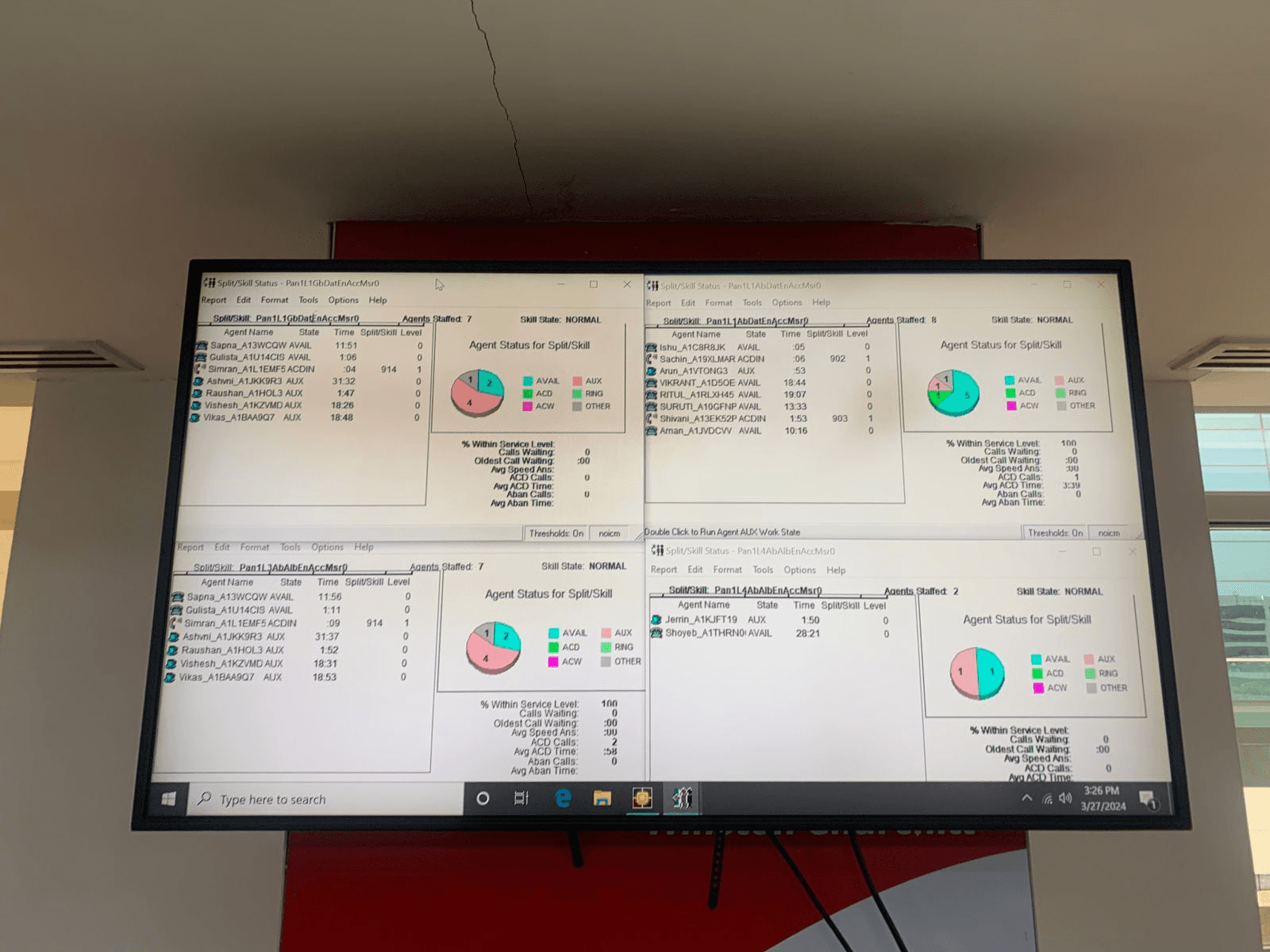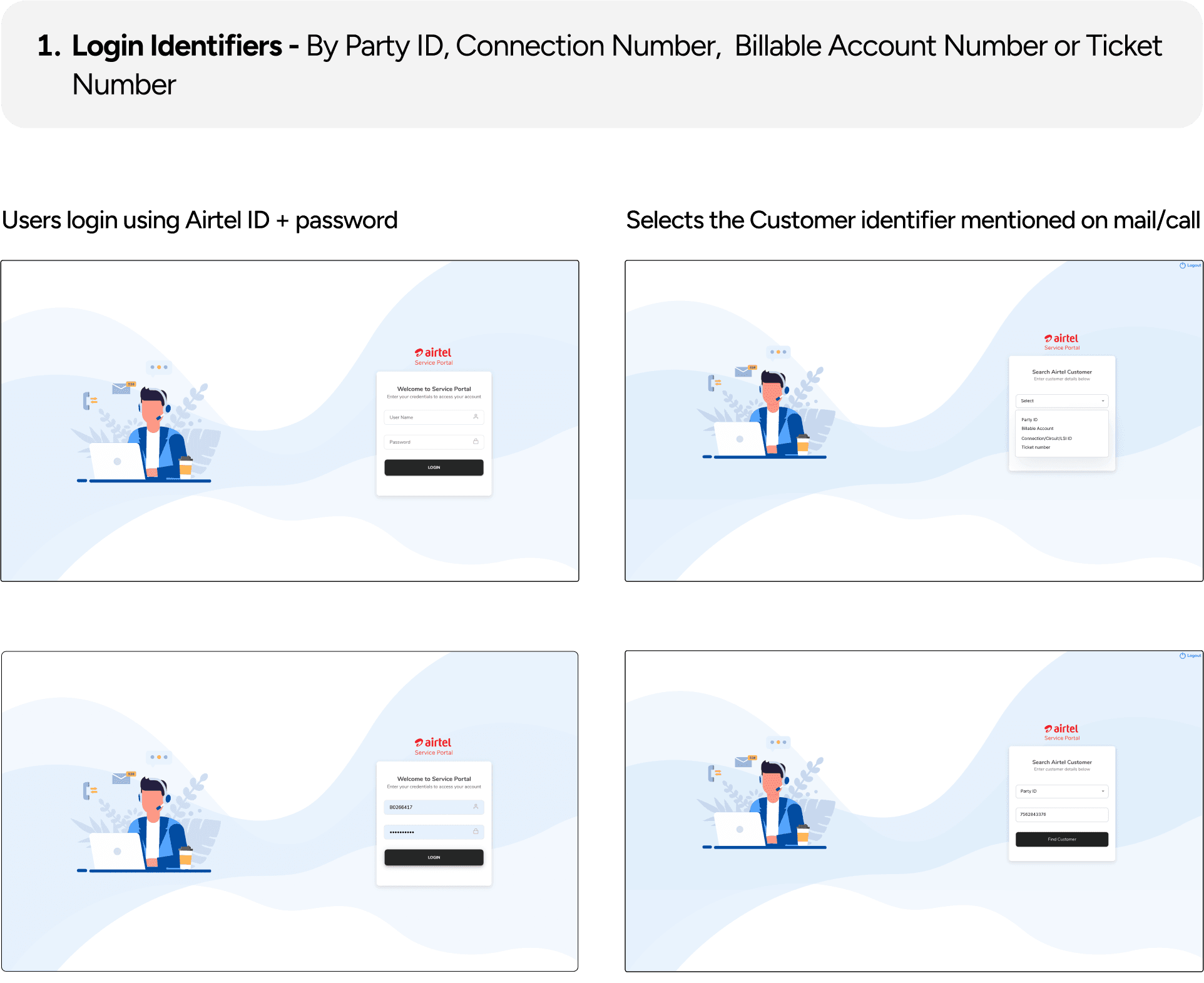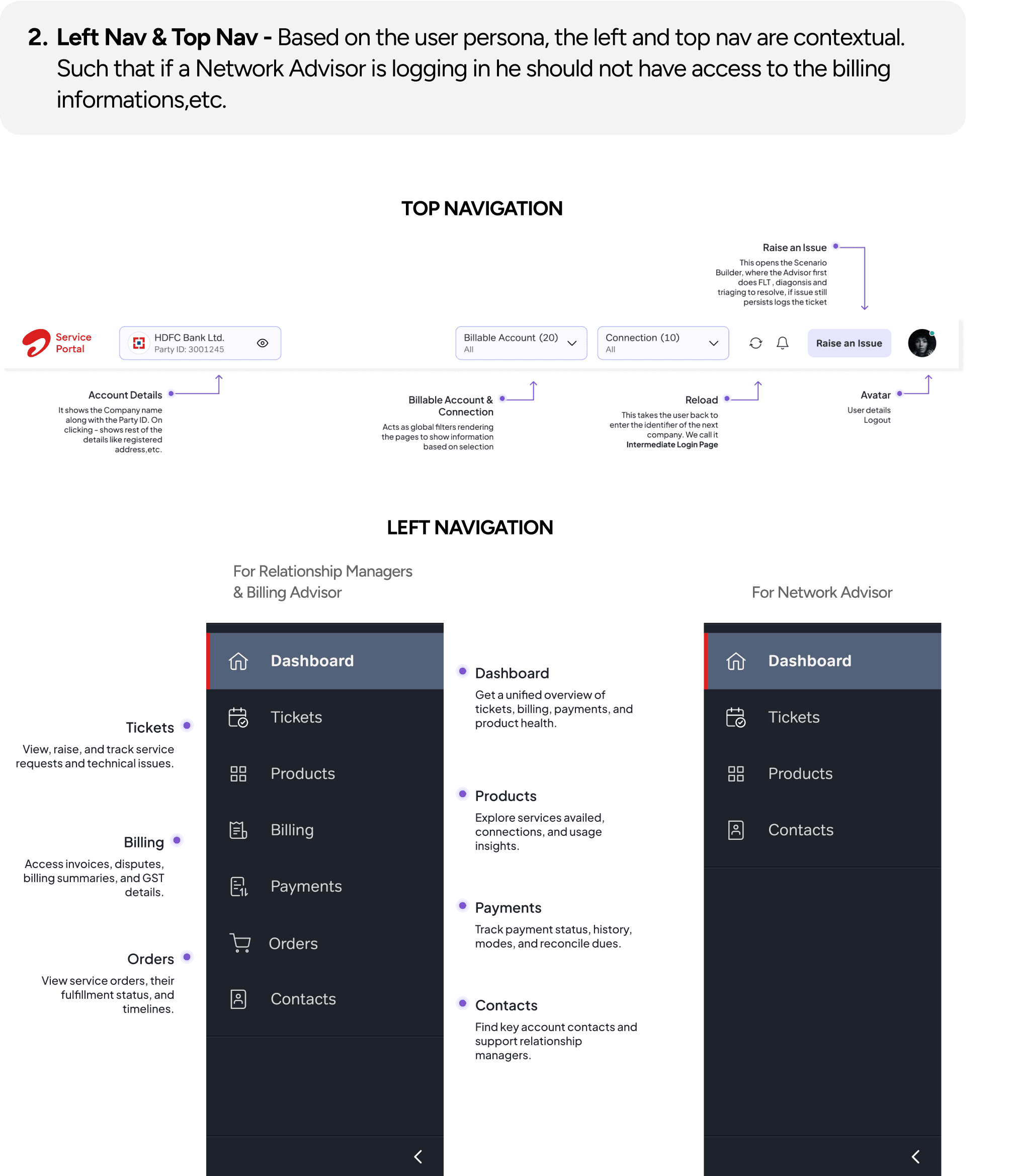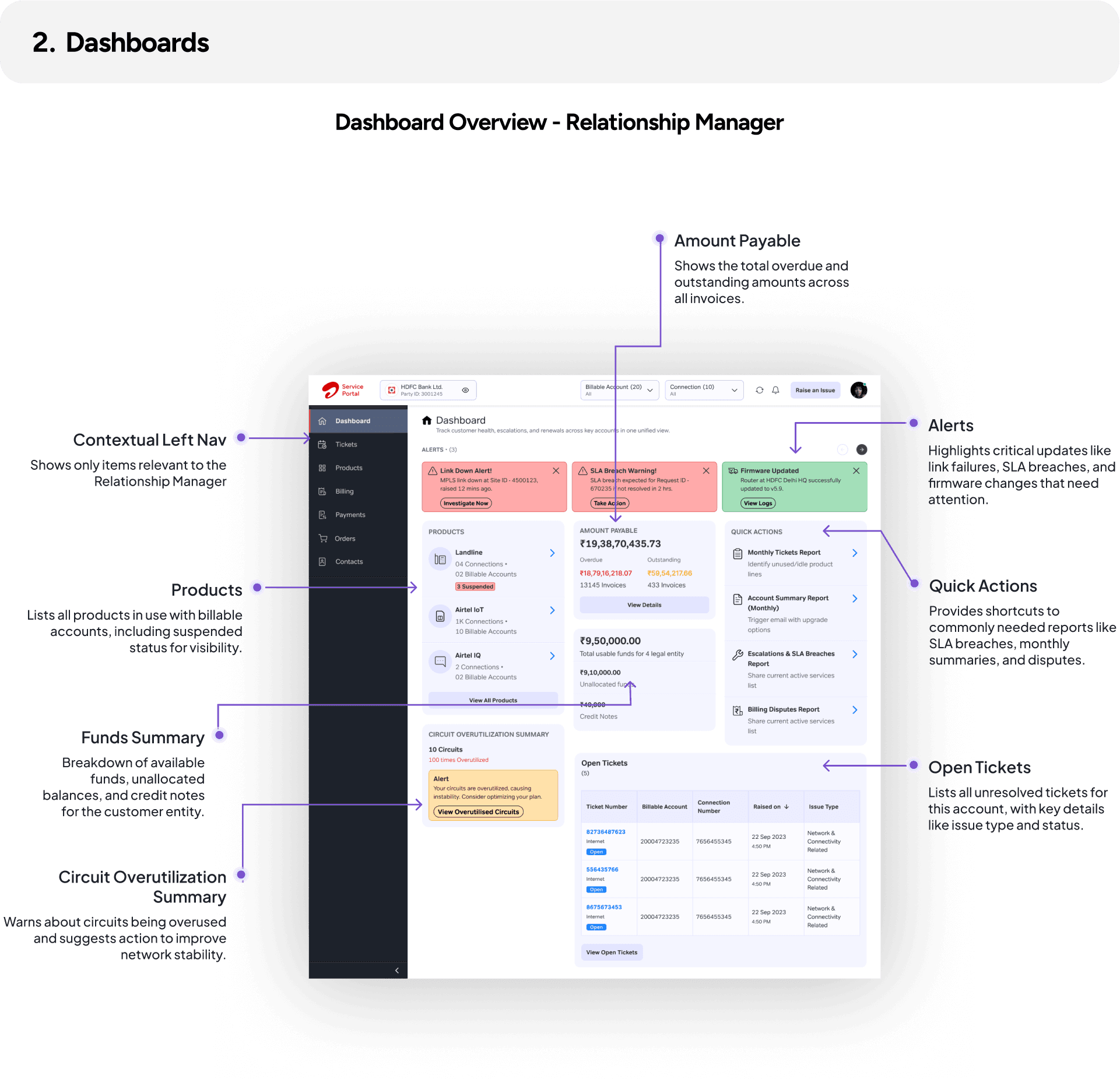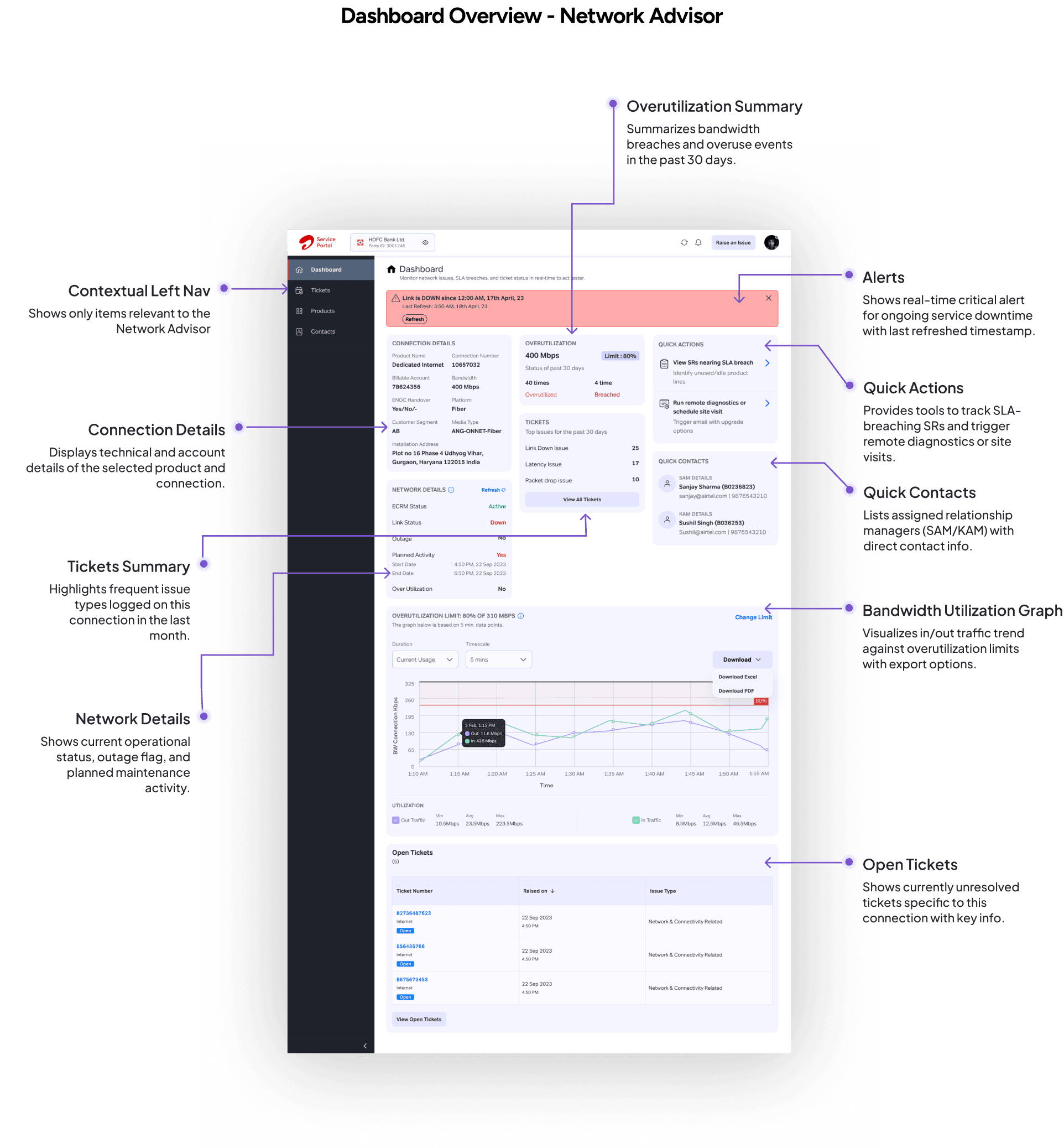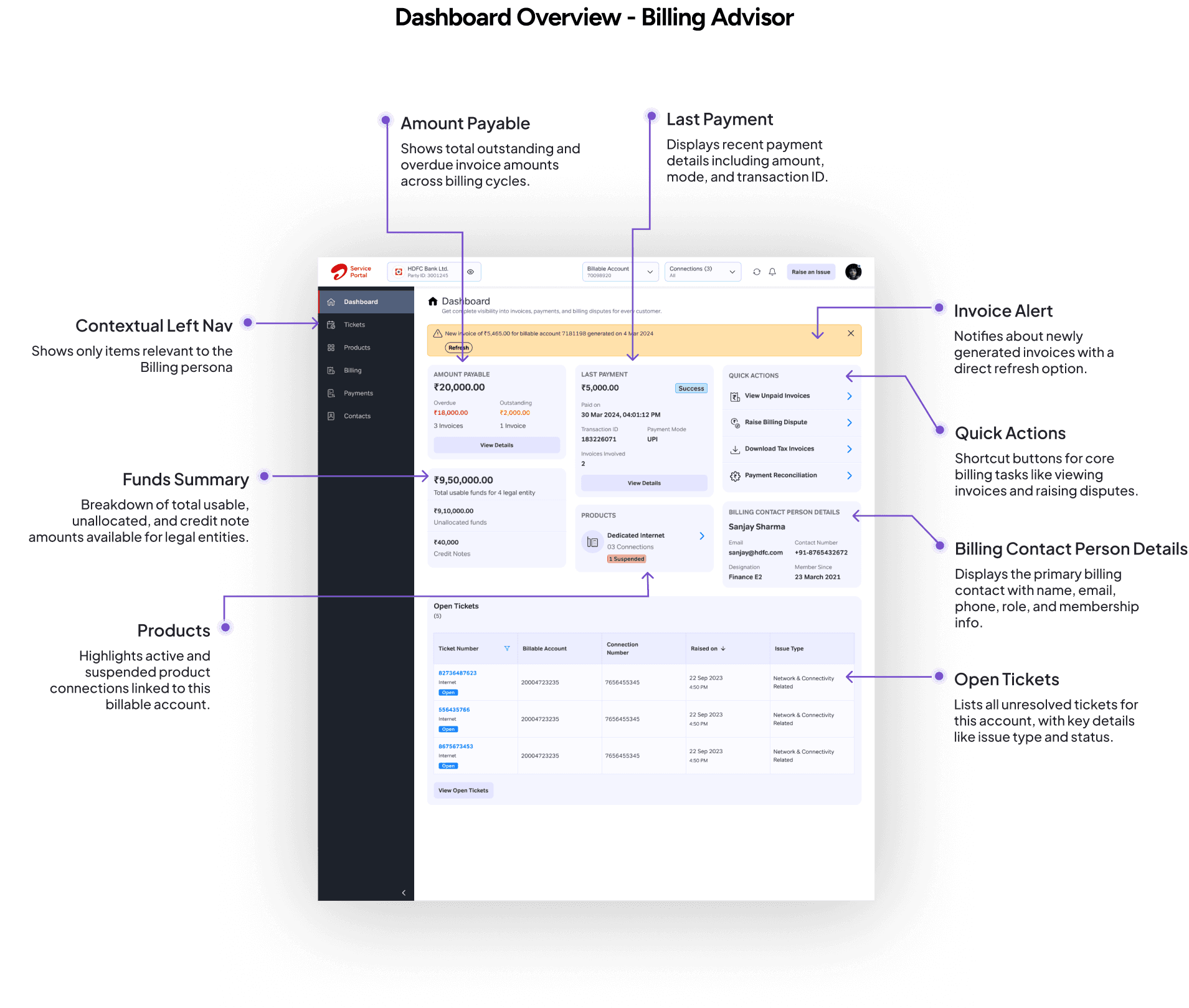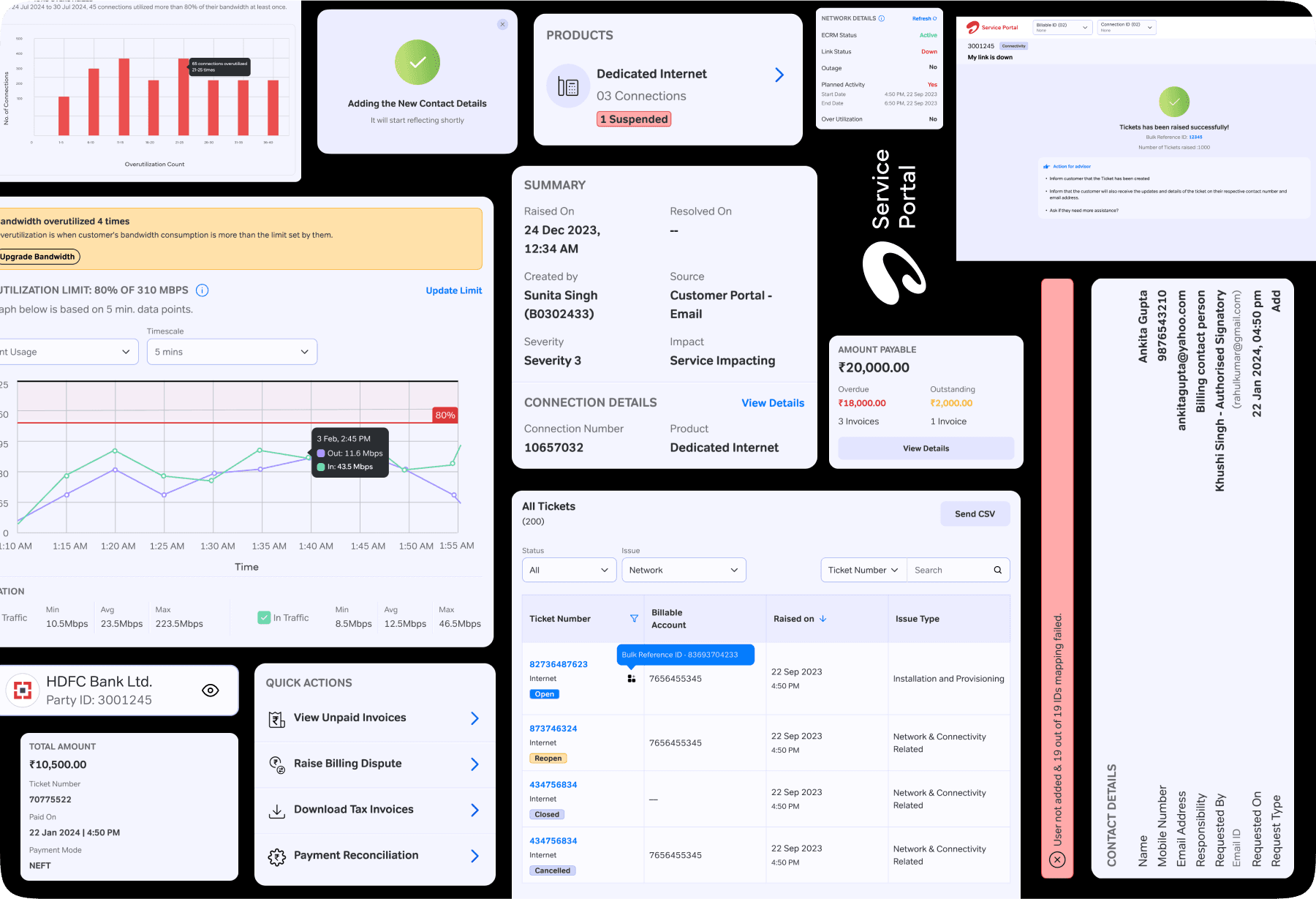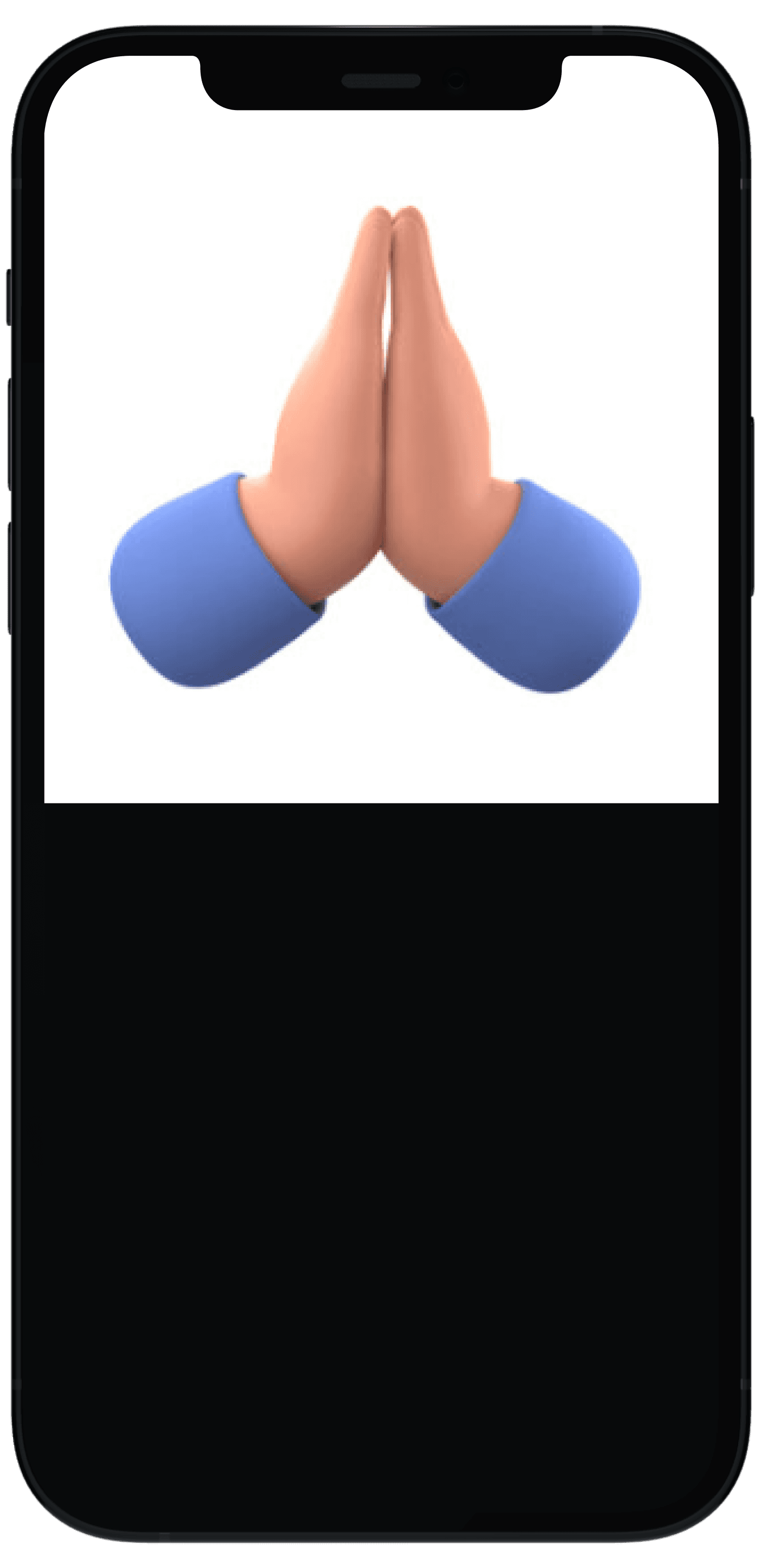SLA Intelligence
Operational Efficiency
Fragmented tools and systems
Internal teams used disconnected tools, each limited to specific products
Inefficient Diagnosis
Advisors had to manually log tickets, diagnose issues, and switch tools to resolve one case.
Incomplete Customer View
No single view of customer accounts, especially bundled solutions
Lack of Personalization
Billing, technical, and relationship management needs were served through the same cluttered UI.
“
Problem Statement

Rajat Sharma
Location
Manesar
Goals
Resolve link-downs, connectivity issues quickly, avoid unnecessary L2 escalations
Frustrations
Manual diagnostics
Can’t see customer history at a glance
Switching tools for each step

Piyush Sachdeva
Location
Chennai
Goals
Resolve payment, billing plan, invoice, and account configuration issues
Frustrations
Overloaded interface showing network data
Can’t easily access statement of accounts or unallocated payment view
Poor filtering in invoice history

Relationship Manager
Nikita Singh
Location
PAN India
Goals
Proactively track account health, get early warnings for large enterprise clients
Frustrations
No overview across Party/BA/LSI
Reactive approach, relies on L1 escalations
No quick KPIs or dashboards
To Design the Service Portal as a context-aware platform, where access, visibility, and workflows change based on:
User type (L1 Advisor vs RM)
Assigned products (Connectivity, IQ, IOT, etc.)
Access level (Party, BA, or LSI)
This allowed us to:
✔️
Show only relevant diagnostics, metrics, and modules
✔️
Build a clean, role-driven left navigation
✔️
Reduce clutter, errors, and time-to-resolution
Focused first on high-ticket volume products — ILL, MPLS, PRI. This allowed us to:
Pilot the diagnostic logic with real usage
Validate our LSI-based view structure
Build core diagnostic journeys (pre-SR + post-SR)
